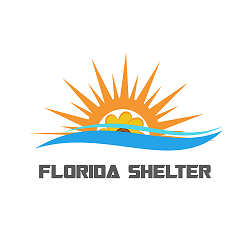Homeownership is a significant milestone and a long-term investment, making it crucial to choose the right mortgage option that aligns with your financial goals and risk tolerance. In Florida, two primary mortgage types dominate the landscape: fixed-rate mortgages (FRMs) and adjustable-rate mortgages (ARMs). Each type offers unique advantages and disadvantages, and understanding these distinctions is essential for making an informed decision.
What are the Pros and Cons of Fixed-Rate vs. Adjustable Rate Mortgages?
Fixed-Rate Mortgages (FRMs)
Pros:
- Predictable Payments: FRMs offer stability and predictability, as the interest rate remains constant throughout the loan term. This provides peace of mind and allows borrowers to budget effectively.
- Protection from Interest Rate Fluctuations: FRMs shield borrowers from the impact of rising interest rates, safeguarding them from unexpected payment increases.
- Suitable for Long-Term Homeowners: FRMs are ideal for those seeking long-term stability and predictability in their mortgage payments.
Cons:
- Potentially Higher Initial Rates: FRMs often carry higher initial interest rates compared to ARMs.
- Limited Flexibility: FRMs offer no potential for lower payments, even if interest rates decline.
Adjustable-Rate Mortgages (ARMs)
Pros:
- Lower Initial Rates: ARMs typically attract borrowers with lower initial interest rates compared to FRMs.
- Potential for Lower Payments: ARMs may offer lower payments during the initial introductory period, often fixed for several years.
- Flexibility to Benefit from Falling Rates: ARM borrowers may benefit if interest rates decline during the adjustable period.
Cons:
- Risk of Payment Increases: ARMs carry the risk of higher payments if interest rates rise, potentially impacting affordability.
- Uncertainty and Potential for Rate Shocks: ARMs introduce uncertainty and potential for rate shocks, making budgeting more challenging.
- Suitable for Short-Term Homeowners or Risk-Takers: ARMs may be suitable for short-term homeowners or those comfortable with the risk of fluctuating rates.
Comparing the Pros and Cons
| Feature | Fixed-Rate Mortgages | Adjustable-Rate Mortgages |
| Interest Rate | Fixed | Adjustable |
| Predictability | High | Low |
| Protection from Interest Rate Fluctuations | High | Low |
| Initial Rates | Higher | Lower |
| Flexibility | Limited | High |
| Suitability | Long-Term Homeowners | Short-Term Homeowners, Risk-Takers |
Additional Considerations
Beyond the fundamental pros and cons, several other factors influence the choice between an FRM and an ARM:
- Financial Stability and Risk Tolerance: Borrowers with strong financial stability and low-risk tolerance may favor FRMs for their predictability. Those with a higher risk tolerance may consider ARMs if they anticipate interest rates remaining low or if they plan to sell before the adjustable period ends.
- Current Interest Rate Environment: If interest rates are currently low, ARMs may offer initial savings. However, if rates are expected to rise, FRMs provide stability and protection from future increases.
- Time Horizon: For long-term homeowners seeking stability, FRMs are generally the preferred choice. ARMs may be considered for short-term homeowners who plan to sell or refinance before the adjustable period ends.
Making an Informed Decision
Choosing between an FRM and an ARM requires careful consideration of your circumstances, financial goals, and risk tolerance. Consulting with a mortgage lender or financial advisor can provide personalized guidance and help you navigate the complexities of mortgage options in Florida.
Finally, Navigating the mortgage landscape in Florida can be a daunting task, but understanding the key differences between fixed-rate mortgages (FRMs) and adjustable-rate mortgages (ARMs) is crucial for making an informed decision.
FRMs offer stability and predictability, shielding borrowers from interest rate fluctuations and providing peace of mind for long-term homeowners. ARMs, on the other hand, present the opportunity for lower initial rates and potential savings during the introductory period, but they also introduce uncertainty and the risk of higher payments if interest rates rise.
Ultimately, the choice between an FRM and an ARM depends on a range of factors, including financial stability, risk tolerance, time horizon, and current interest rate trends. Consulting with a mortgage lender or financial advisor can provide valuable insights and tailored recommendations to help you secure the best mortgage option for your unique needs and goals.
As you embark on your homeownership journey in Florida, remember that careful planning, thorough research, and expert guidance can empower you to make informed decisions and achieve your dream of homeownership.




